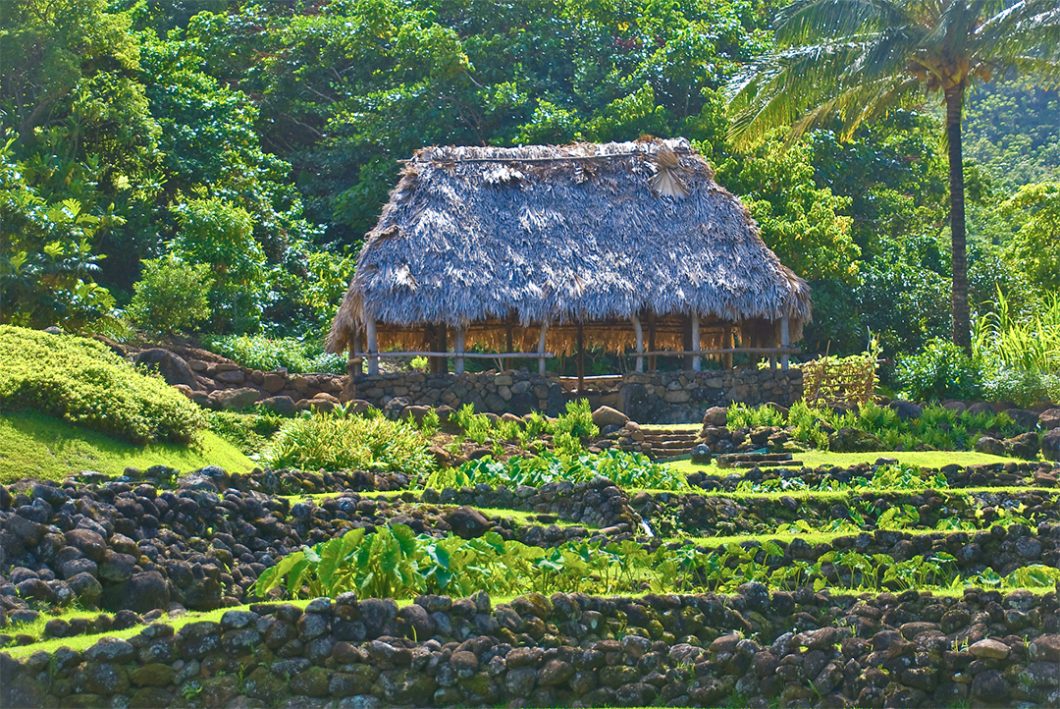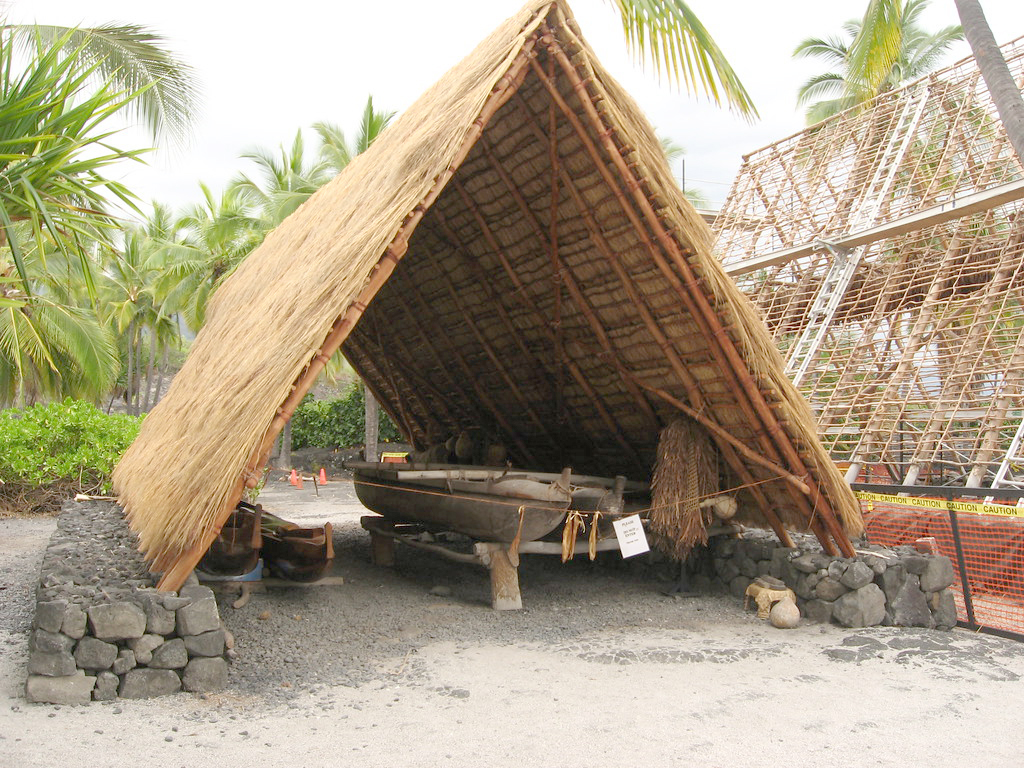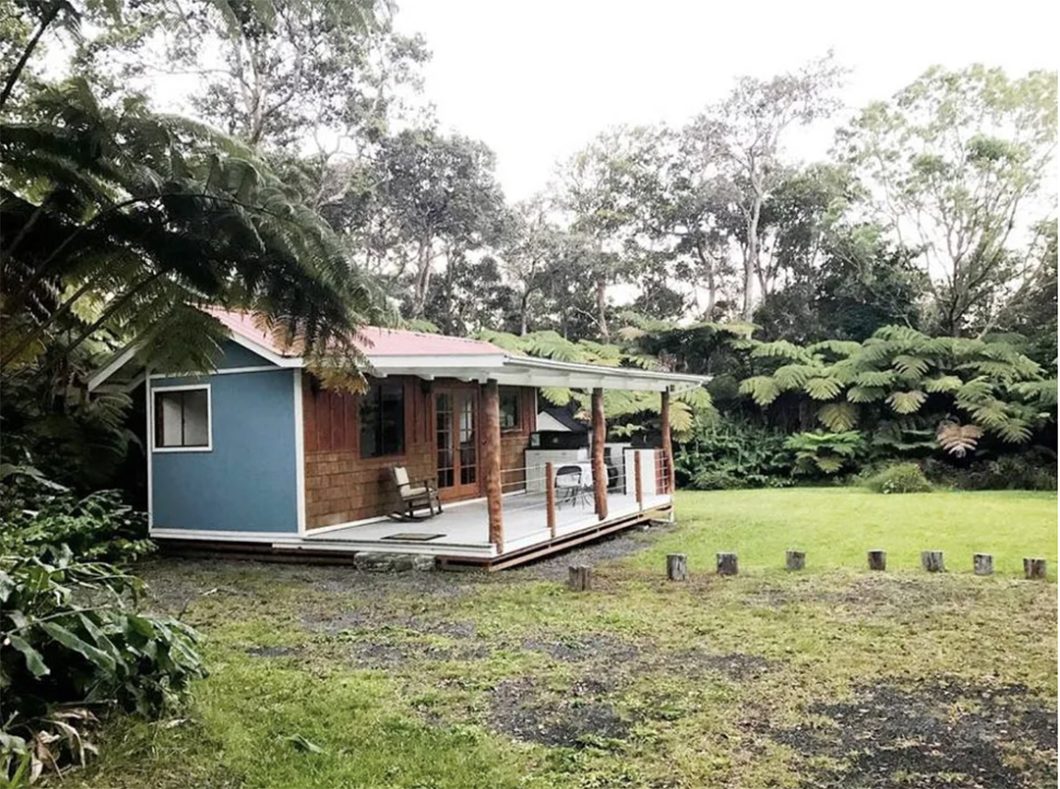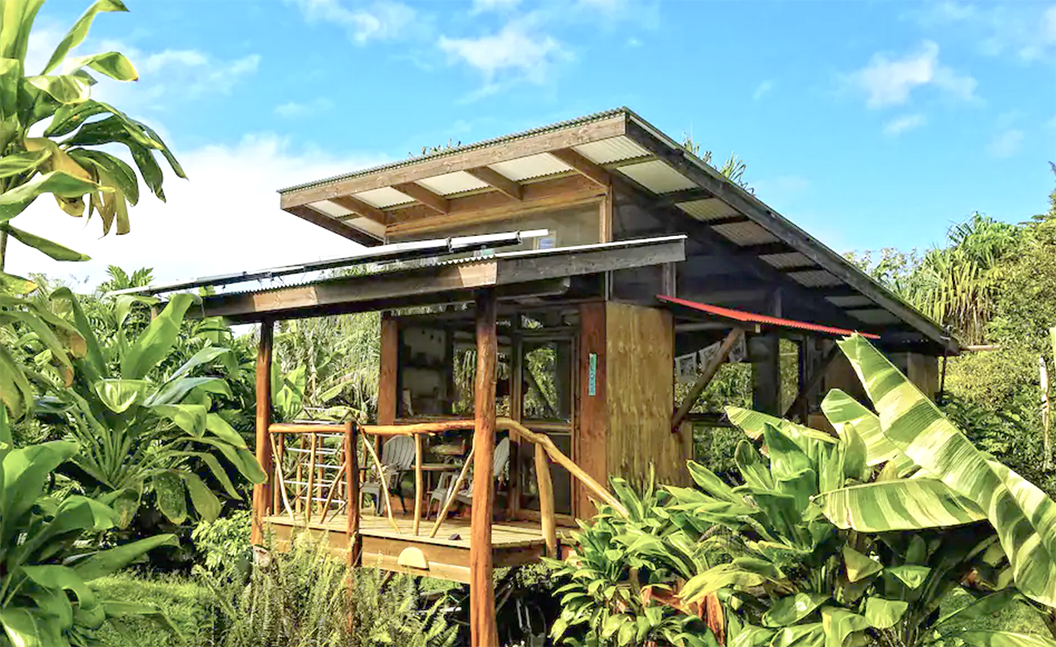Like other historical homes around the world, the homes of Hawai’i were traditionally very small. The hale (pronounced HAH-lay) were the structures built by 19th century Hawai’i islanders and were made of local wood and topped with bundles of pili grass to protect it from the rains.
A traditional hale at the Limahuli Tropical Botanical Garden on Kaua’i.

The walls of the structures were kept open to let in the cool ocean breezes and a simple stone floor kept the ohana (family) dry. Several buildings in a community would be built for different purposes. The hale noa for sleeping, the hale kuke for cooking, and separate structures for men and women to gather and work.
A hale located at Pu’uhonua o Honaunau National Historical Park.

Even contemporary Hawai’an homes take on the traditional hale idea. Many homes are built without full interior walls, and the outer walls have louver windows to create cross breezes. Bringing the outdoors inside is essential in such a mild climate and the lanai (or porch) is a very important part of a modern hale.
Airbnb and Hipcamp have many tiny hale to stay in on a trip to the islands.

Many contemporary homes on the island will be named and usually start with the historical name of Hale. For a taste of the traditional home, stay on a farm at Hale Ulu in Pahoa, or at the Hale Iki house near Volcanoes National Park.
After spending some time on the Big Island, I really appreciate that many of the homes are built to open at each end to let in the prevailing breezes. Not only does this allow homes to avoid the need for air conditioning, but it also allows the deceased spirits of the ohana to freely move through the home.
By Christina Nellemann for the [Tiny House Blog]
